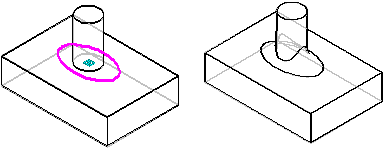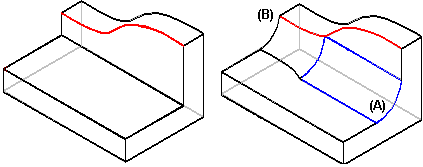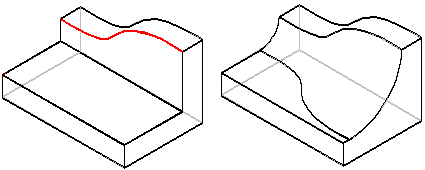In face-to-face blending, you can use a curve or edge to contain the blend. The tangent hold line must lie on one of the blending faces. When the blend encounters the hold line, the blend radius varies so that the blend surface rolls along the hold line and remains tangent to the face on which the hold line lies. You can define a tangent hold line for each of the input faces or for only one of the input faces.

When using tangent hold lines, you can define the blend radius the following ways:
With the default radius option, the radius value you define is used wherever possible. However, if the blend overflows onto a tangent hold line, the blend radius is varied to maintain tangency with faces along the hold line. Notice in the next illustration that the surface (A) was created at the default since it did not interact with the specified hold line (B).

With the full radius option, the faces and tangent hold lines define the blend radius. The blend is created so that the blend surface rolls along the tangent hold line at every point, varying the radius as necessary to maintain tangency between the faces.
